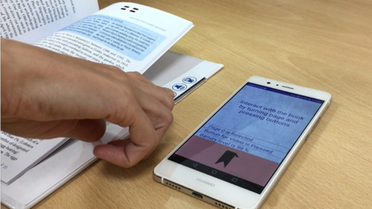Augmented reality could play a major role in initiating the comeback of printed books, according to new research.
Researchers from the United Kingdom’s University of Surrey have unveiled the third generation (3G) version of its Next Generation Paper (NGP) project which allows readers to consume information on printed paper and screen side by side.
“The way we consume literature has changed over time with so many more options than just paper books. Multiple electronic solutions currently exist, including e-readers and smart devices, but no hybrid solution which is sustainable on a commercial scale,” senior lecturer at the Advanced Technology Institute, Dr. Radu Sporea, said in a media release.
He added that augmented reality books, or “a-books” could be the future of many book genres, stating that such technology exists to “assist the reader in a deeper understanding of a written topic and get more through digital means without ruining the experience of reading a paper book.”
With no visible wiring, users can trigger digital content through these a-books with a simple gesture like the swipe of a finger or by a turn of a page, which will then prompt information to be displayed on a nearby device.
Augmented reality is an enhanced version of the real physical world that can be achieved using digital visual elements, sounds or other sensory stimuli through technology. Unlike virtual reality, augmented reality uses a real-world setting, allowing users to control their presence in the real world and enhance both the virtual and physical world.
“The original research was carried out to enrich travel experiences by creating augmented travel guides. This upgraded 3G model allows for the possibility of using augmented books for different areas such as education,” postgraduate researcher George Bairaktaris was quoted as saying.
“In addition, the new model disturbs the reader less by automatically recognizing the open page and triggering the multimedia content.”
The a-book is a hybrid electronic device that offers users access to up-to-date information and pertinent multimedia content as part of an ordinary interaction with a typical paper book. It maintains the look and feel of a regular, conventional printed book and is simultaneously connected to the internet through an adjunct smart device.
These augmented reality books can be manufactured on a semi-industrial scale thanks to new features like pre-printed conductive paper and power efficiency.
“What started as an augmented book project, evolved further into scalable user interfaces. The techniques and knowledge from the project led us into exploring organic materials and printing techniques to fabricate scalable sensors for interfaces beyond the a-book,” he added.













